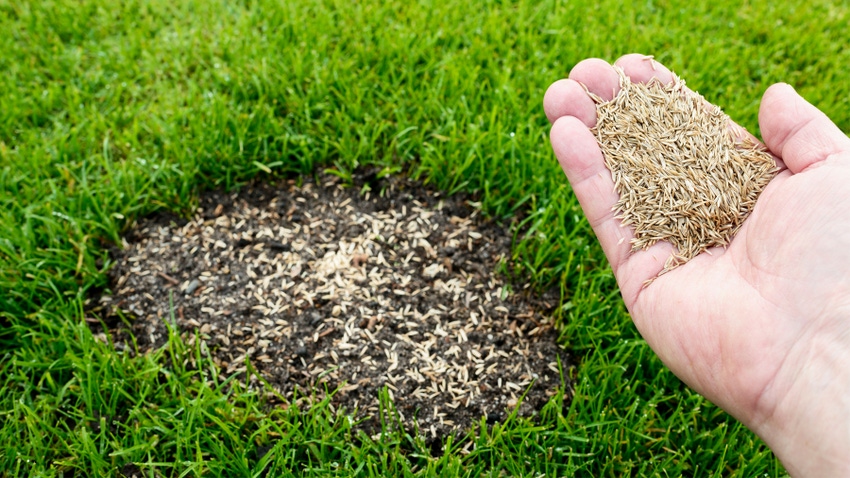
As a recent first-time homeowner, I found the amount of work needed to keep a lawn lush and green a bit of a shock. Choosing the best lawn mower, figuring out how to work the sprinkler system and trying to get rid of pesky weeds were among the obstacles.
A friend of mine, who happens to be a Master Gardener, helped me identify weeds, selected the perennials that would grow best in different parts of the yard and advised me on how to keep everything green. Thank goodness for knowledgeable friends and all of the resources from Extension online. I never would have guessed I needed to do so much research into yard care!
While the heat of summer is still very present, frosty mornings will be here before we know it. Here are a few things I’m planning to do for my lawn to ensure it looks just as good come springtime.
Transitioning your lawn
The late growing season, which runs from Aug. 15 to Oct. 10, serves as the last opportunity to improve lawns before winter, according to South Dakota State University Extension.
With cool-season turf, the best time to control broadleaf weeds is in September. The lower temperature allows weeds to better take in herbicides, and the grass still has a chance to fill in the spaces left vacant by weeds.
Commonly, you choose a herbicide to target the weeds you have. However, garden centers generally carry a herbicide mix that covers a range of weeds. Always read product labels for proper application, weeds that will be affected and safety precautions.
For crabgrass and other grassy weeds, control can be difficult late in the season. Extension’s advice is to ignore these weeds, as they die off in the first frost, and to make a plan of attack come spring.
The late growing season is also a good time to fertilize your lawn because the grass still has a chance to respond. Good soil moisture from rainfall or irrigation will be needed to help the nitrogen fertilizer increase turf density and green color.
For low-maintenance lawns, fertilizing once in the fall is sufficient, whereas moderate- to high-maintenance lawns need one to two fertilizer applications. Early September is perfect timing for the first application, with a second application coming four weeks later.
With two cattle dogs who love to rough-house in their new yard — and a puppy that likes to dig — some seeding will be done this fall to fill in the bare patches in the lawn. Fall is the best time of year to plant new seed or sod, as cooler weather and rains make grass establishment easier.
After researching various Extension sites, I’ve decided to overseed the backyard lawn for best results. SDSU Extension suggests aerating and preparing the soil. Rather than renting and hauling a large core aerator, I’ll use a spike wheel to punch holes in the ground to let oxygen and moisture reach the roots. As the affected area of my cattle dogs’ chaos is small, overseeding by hand is my plan of attack.
Saving perennials
The previous homeowners extensively landscaped the yards, both front and back, with a variety of perennials, including limelight hydrangeas, peonies, bluestem grass, hosta, irises and daylilies.

FALL PLANTING: University of Nebraska Extension shares that early fall is the perfect time to plant new perennials into garden beds. Areas that had plant loss or need sprucing up can become home to a new perennial, as warm soils foster good root growth. Trips to the local garden center usually leave me indecisive about which plants would look best in my garden beds. (Sarah McNaughton)
I added even more hydrangeas and native grasses this summer — and I hope that they will still be around come spring!
Get plants ready for winter
To help plants and beneficial insects survive the winter, take certain actions in the fall. For example, helping bees overwinter can be as easy as waiting until spring to cut back plants. As long as foliage is disease-free, the bees will be able to overwinter in cavities, including the hollow stems of plants.
For the newly planted perennials, adding extra mulch around the roots will trap protective air pockets around roots, mitigating the effects of quick temperature changes. Maintaining a mulch bed of wood chips, shredded bark, straw, pine straw and grass clippings about 3 inches deep will help plants transition.
Where my dogs play, I use untreated cedar mulch to keep them safe when they’re in the mood to chew mulch, but I use cheaper color-treated mulch away from the dogs in the front garden beds.
While only time (and the snowmelt) will tell how successful I am at helping my lawn and garden through the winter, I hope that my efforts this fall will reward me come spring.
About the Author(s)
You May Also Like






